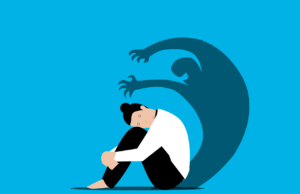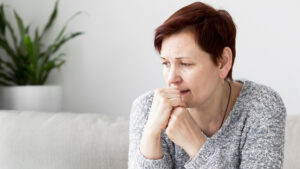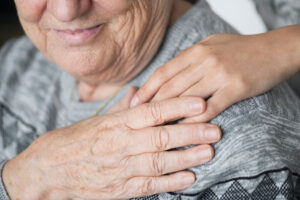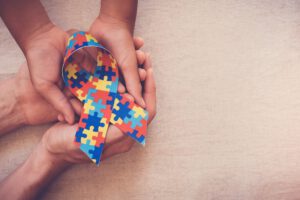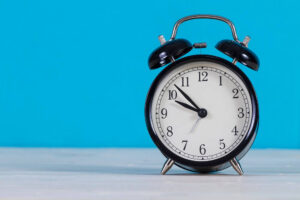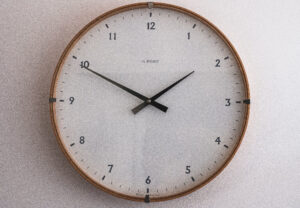
A few facts about sleep

Sleep plays an important role in our lives and affects our health. It is necessary for one’s well-being, both physical and mental.
Among other things, sleep disorders may lead to sleepiness, fatigue, attention and concentration difficulties, low frustration tolerance, irritability, and impaired functioning.
Sleep allows our bodies to make cytokines, a protein that targets infection and inflammation, thus creating an immune response.
Insufficient sleep may adversely affect heart function and others systems, including the immune system.
It also affects diabetes, obesity, and how well our bodies can utilize vaccines, such as the flu vaccine.
Although each of us differs in how much sleep we need, as adults, we generally need 7-8 hours of sleep a night, in order to feel refreshed and alert. When this is not possible, short naps (e.g., 20-30 minutes) may help make up for lost sleep. Factors affecting how much sleep we need include age, sex, and how much we have been sleeping.
Primary sleep disorders are sleep disorders that are not due to another mental disorder (such as a mood or anxiety disorder), a general medical condition or a substance (used concurrently or recently discontinued).
Rather, primary sleep disorders “are presumed to arise from endogenous abnormalities in sleep-wake generating or timing mechanisms, often complicated by conditioning factors.” [1]
They may be divided into two general categories—one characterized by the amount, quality or timing of sleep (“dyssomnias”), the other by abnormal behavior or physiological events occurring in conjunction with sleep, sleep stages or sleep-wake transitions (“parasomnias”).
Sleep disruptions can lead to a negative spiral of events, and should be investigated and treated.
Stages of sleep
Sleep involves transitions among three states: wakefulness, rapid eye movement (REM) sleep associated with dreaming, and non-REM sleep.
During REM sleep, the electrical activity of the brain, as recorded by an electroencephalogram (EEG) looks similar to that occuring during waking. But while the neurons in the brain may function similarly, in REM sleep there is a temporary muscle paralysis.
In some sleep disorders, such as narcolepsy (described below), the distinctions among the various states become blurred.
The bodies of most vivid dreamers remain motionless while dreaming, though the dreams themselves may include movement. However, people with REM Sleep Behavior Disorder (RBD) move their limbs in bed, talk during their sleep or even sleepwalk, without being aware they are dreaming—they only experience the sensations linked to what is occuring in their dream.
Sleep-Wake Disorders
Insomnia – difficulty falling asleep or sleeping through the night.
Among other things, insomnia may be linked to stress, anxiety, depression, reflux, chronic pain, or thyroid problems.
Primary Insomnia – its primary feature is difficulty falling asleep or maintaining sleep i.e., intermittent wakefulness during sleep; or the person complains of nonrestorative sleep, spanning a month or more. This may cause significant distress or impairment in one or more areas of functioning (e.g., social, occupational). To qualify for this diagnosis, the insomnia must not be attributed to another sleep disorder, substance/medication induced sleep disorder, mental disorder or medical condition.
There may be physiological or psychological arousal at night, and/or a preoccupation/distress regarding the inability to sleep.
Chronic insomnia may lead to a sense of decreased well-being during the day, such as a dip in mood or decrease in motivation, fatigue and decreased energy, decreased attention and concentration.
Hypersomnolence – excessive sleepiness for at least one month, evidenced by prolonged sleep during the night or frequent daytime sleep episodes. Moreover, it is not attributed to another sleep disorder, substance/medication induced sleep disorder, mental disorder or medical condition.
Narcolepsy – repeated, irresistible and extreme sleepiness during the day as well as falling asleep during the day. For diagnostic purposes, these sleep attacks must occur daily for a period of at least 3 months; they cause significant distress/impairment in functioning. Sleep studies reveal “recurrent intrusions of elements of rapid eye movement (REM) sleep into the transition period between sleep and wakefulness.” [2]
In addition to sleepiness, individuals with narcolepsy may experience either (1) “episodes of sudden, bilateral, reversible loss of muscle tone” lasting seconds to minutes and may be precipitated by intense emotion (“cataplexy”), or (2) recurrent intrusions of elements of REM
sleep (see above), manifested by “paralysis of voluntary muscles or dreamlike hallucinations.” [3]
Breathing-Related Sleep Disorders
The essential feature of these disorders is sleep disruption which leads to excessive sleepiness or insomnia, considered to be due to abnormalities of ventilation during sleep. These symptoms are not considered reflective of a mental disorder, or due to direct physiological effects of medication or other substances, or a medical condition that leads to sleep symptoms via a mechanism other than abnormal breathing.
It is often diagnosed subsequent to complaints of excessive sleepiness—during the night there are frequent arousals as the person tries to breathe normally.
The sleepiness is most evident in relaxing situations, such as watching TV or reading a book, and may occur when at the movies, a concert or a boring meeting. The person may express pride in being able to sleep anywhere, however, naps are not refreshing and may be accompanied by a dull headache. In some cases, people have been known to fall asleep while talking with someone, eating, walking or even driving.
Obstructive Sleep Apnea Hypopnea
This condition is estimated to affect between 1%-10% of the adult population, especialy elderly people. A familial tendency for obstructive sleep apnea has been observed. It may take years to be diagnosed. While weight loss has been known to spontaneously resolve this condition, it is generally considered progressive and can be quite serious, especially if not managed adequately.
Central Sleep Apnea
Management of underlying medical causes may lead to improvement in the generally chronic, unremitting course of this disorder.
Sleep-Related Hypoventilation
This sleep disorder is a breathing-related disorder that interrupts normal sleep. The person’s breathing is restricted, leading to low levels of oxygen or elevated levels of carbon dioxide in the blood.
Common causes include: chronic obstructive pulmonary disease (COPD), emphysema and bronchitis; chest wall deformities; central respiratory drive depression, which can be caused by alcohol, narcotics and other substances; obesity; neruomuscular disorders.
It may be variously treated by: weight loss; oxygen therapy to support breathing; inhaled medications to open airways and treat ongoing lung disease; the use of a CPAP or BiPAP machine that keeps airway open while the person sleeps; surgery to correct a chest deformity.
Circadian rhythms
The term “circadian rhythm” refers to an internal clock that operates on an approximately 24-hour cycle. It is influenced by light, which alerts the brain to wake up, and darkness, which triggers a release of melatonin. Regular sleep patterns are important to maintain the circadian rhythm functioning normally, and safeguards against insomnia.
Male circadian rhythms may run longer than female ones, which allows men to be less tired in the evening, whereas women tend to be early risers. Men suffer more from sleep deprivation and recover more slowly from it; this can affect their work performance. Women who work at night tend to experience a dip in their energy level and alertness, since their rhythms are quicker. Thus, they may be more at risk for work-related injuries during night shifts.
To keep circadian rhythms in check, avoid bright lights at night, but expose yourself to sunlight during the day.gTThis should help keep your circadian rhythms in check.ht
Certain medications, such as Valdoxan (agomelatin) may stabilize circadian rhythms, but can interact adversely with other medications and must thus be carefully monitored.
Circadian Rhythm Sleep Disorder
The essential feature of this disorder is that there is a mismatch between the individual’s circadian sleep-wake cycle and external demands with respect to the timing and duration of sleep. In contrast to other primary sleep disorders, here the problem is not with the mechanisms generating sleep and wakefulness per se. Rather, given the circadian mismatch, the insomnia and excessive sleepiness are not aligned to the person’s need to function at certain times, giving rise to impaired social or occupational functioning and subjective distress.
Many individuals with circadian rhythm sleep disorder do not seek treatment, and their symptoms are not severe enough to warrant a diagnosis.
Subtypes include: delayed sleep phase type, jet lag type, shift work type and unspecified type.
Delayed sleep phase type – a “night owl,” the person is locked into habitually late hours, unable to move sleep to an earlier schedule. They may not wake up at socially acceptable hours, even with several alarm clocks going off. Many remain sleep deprived, as they do not get enough sleep during week days.
Parasomnias – a group of sleep disorders that involve unwanted events or experiences that occur upon falling asleep, sleeping or waking up. Some sleep arousal disorders are related to REM sleep, whereas others are not. Parasomnias may include abnormal movements, behaviors, emotions, perceptions or dreams.
Sleepwalking
Sleepwalking usually occur during the first third of the major sleep episode. The person has a blank, staring face and is relatively unresponsive to others, can be awakened with great difficulty.
There is amnesia for the sleepwalking episode, upon awaking. After a short period of disorientation or confusion, the person functions as usual. However, it causes distress and may affect areas of functioning and/or limit certain activities, which are avoided (e.g., camping). As with any sleep disorder, it is important to rule out the direct physiological effects of a substance or general medical condition.
Nightmares and Sleep Terrors
A nightmare typically occurs in a lengthy and elaborate dream sequence, and is characterized by explicit, unsettling content, which is anxiety provoking or even terrifying. It may involve imminent physical danger, such as pursuit, attack or injury. Sometimes there is a feeling of personal failure or embarrassment.
Nightmares occur during REM sleep, later at night or during early morning hours. It can be difficult to fall asleep again, after awakening from a nightmare, as it tends to linger on, with scary images affecting one’s mood and behavior the next day.
In contrast, night terrors tend to occur earlier, during non-REM sleep.
There is an abrupt awakening from sleep, and the person experiencing a night terror may cry out, shout, sleepwalk. There are manifestations of autonomic arousal (e.g., tachycardia or rapid heart rate, rapid breathing, flushing of the skin, sweating, dilation of the pupils, increased muscle tone) and behavioral manifestations of intense fear, before the person relaxes enough to return to sleep. During the episode, it is difficult to awaken or comfort them. Upon awakening, the person may vaguely recall a dream; there may be fragmentary dream images but the storylike dream sequence seen in nightmares, is lacking.
Repeated occurrences of night terrors may lead to a diagnosis of night terror disorder. Other parameters include its intensity, clinically significant distress or impairment, and the potential to injure oneself or others.
Night terrors are commonly seen with children, especially between four and eight years old. Night terror disorder begins in children between 4-12 years old and spontaneously resolves in adolescence. In adults, it is most common between the ages of 20-30 years. Individuals with night terror disorder often report a family history of night terrors or sleepwalking.
Disturbing dreams don’t necessarily change how much time you spend in various sleep stages or the number of times you awaken, but they can affect how long it may take to fall asleep at night, or how your body switches from non-REM to REM sleep. This may affect how rested you feel in the morning.
REM sleep behavior disorder (RBD) – People who suffer from RBD “act out” their dreams: they move arms and legs, or even get up and engage in activities associated with waking; they may talk in their sleep, shout, scream, hit or punch. These become apparent when causing danger to the person, their sleep companion or someone else, and can usually be treated (e.g., with a benzodiazapine named Clonazepam; alternatives may include some anti-depressants or in some cases, melatonin). It is thought that about 0.5% of the population may suffer from RBD (Mahowald & Schenck). Annual neurological follow-up is indicated for these individuals.
There may be a link between RBD and Parkinson—in one study, 38% of healthy patients (N=29) went on to develop a form of Parkinson’s Disease. Parkinson’s disease is a progressive neurological disease characterized by tremors, rigidity, difficulty initiating movement, and problems with walking or posture. Eventually, it may be followed by gradual cognitive decline and personality change.
Animal studies reveal a link between RBD and brain stem lesions. For example, such cats will arch their backs, hiss and bare their teeth, as if for no reason, while their EEGs reveal normal REM sleep.
Restless leg syndrome (RLS) – a sleep movement disorder causing an urge to move one’s legs while trying to fall asleep.
Substance/Medication-Induced Sleep Disorder
A sleep disorder induced by medication or other substances.
Other parasomnias
The DSM-V lists additional, mostly non-specific sleep disorders (beyond the scope of this article).
Dreams
Everyone dreams for about two hours per night, and they can occur during any stage of sleep, although they are most vivid during REM sleep. Some people like keeping a notebook or dream journal near their bed, to record their dreams. These dreams can then be brought in and worked with in psychotherapy.
How to tell if your mood is affecting your sleep
Sleep disturbance and mood influence each other, and it may be hard to tell which came first, a bit like the chicken and the egg question.
The following tips may point in the right direction.
- Are troubling thoughts constantly on your mind, including when you finally climb into bed?
- Are you feeling tired or fatigued during the day, even after a good night’s sleep? Feelings of depression and anxiety may interfere with your sleep patterns, leading to a lighter sleep or early awakening.
- Do you have “bad” dreams (e.g., disturbing, negatively charged, scary, nightmarish)?
If necessary, discuss treating anxiety, depression and low mood with your physician. In addition to regular exercise (e.g., walking), you may consider psychotherapy. Sometimes, a combination of psychotherapy and appropriate medication works best.
Thyroid problems and sleep
The thyroid is a small gland responsible for regulating an important hormone – the thyroid hormone. Among other things, it helps keep our bodies warm and our organs functioning efficiently. A blood test can indicate whether or not thyroid levels are within normal limits (T3, T4, TSH).
Hyperthyroidism
When too much thyroid hormone is produced, it causes various bodily functions to speed up, including having a racing pulse, making one feel jittery and wound up; often anxious. Since the person finds it difficult to wind down and relax, sleep tends to become a challenge. Although initially one may feel energized, this may give way to a sense of tiredness.
Hypothyroidism
Here, the thyroid is underactive, and not enough thyroid hormone is produced. This tends to slow one down and fatigue more easily. Sometimes, there is a foggy feeling and there may be a constant sense of exhaustion.
These conditions may get in the way of proper sleep, and need to be monitored medically and pharmaceutically.
Pain and sleep
People suffering from either acute or chronic pain often report difficulty sleeping (e.g., duration and quality of sleep). They may worry about not getting enough sleep, as this may affect their overall health, and be more vuulnerable to environmental factors affecting their sleep, such as light, noise, temperature, suitable mattresses. For example, they may wake up more often, as pain intrudes on their sleep cycle.
General Tips for Everyone
- Use a relaxation technique daily, before going to sleep. For example, practice deep abdominal breathing or circular breathing.
- Limit or discontinue the use of caffeine (e.g., coffee, black tea, some sodas).
- Limit alcohol intake, especially at night.
- Learn how to summon a pleasant dream during the day, and then again, before going to sleep. This may help ease your way into sleep.
- Avoid bright lights and screen time (TV, computer/Ipad, cellphone, Kindle) before going to sleep. These electronic devices emanate light that activates the brain and is not conducive to sleep. It is much better to simply read an actual book.
- Avoid physical exercise and heavy meals before bedtime, but be sure to exercise during the day. Such meals should be eaten 2-3 hours before retiring to bed. A light snack up to about an hour before is considered okay, if hungry.
- Try to maintain a regular sleep schedule and regular hours for going to bed and then sleeping, preferably on weekends as well. According to the National Sleep Foundation, the best “window” for falling asleep is somewhere between eight and midnight.
- Learn how to discharge trapped energy in your body (physical sensations of constriction and tension). One way to do this is to practice Somatic Experiencing (SE) techniques on a daily basis.
- Adopt a relaxing routine before going to bed.
- If you can’t sleep, best go into another room and do something relaxing until you can. Best not associate the bedroom with work, computer, or TV. Sleep experts recommend the bedroom be reserved for sleeping and sex.
- If you have difficulty sleeping, keep a sleep journal, to document possible patterns affecting your sleep.
For people with chronic pain:
- Physical therapy may be used to ease your sleep problems.
- Consider using pain killers and/or sleeping pills, if prescribed by your physician.
1. DSM-IV (1994), p. 551
2. DSM-IV (1994, p. 562)
3. ibid

